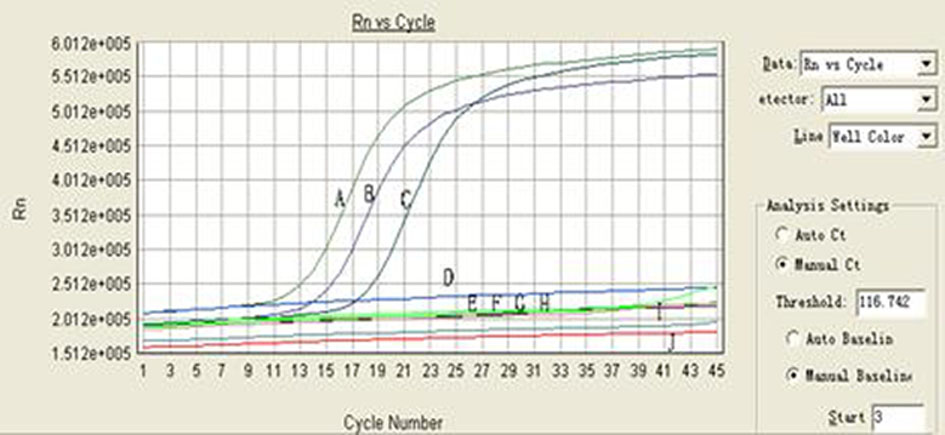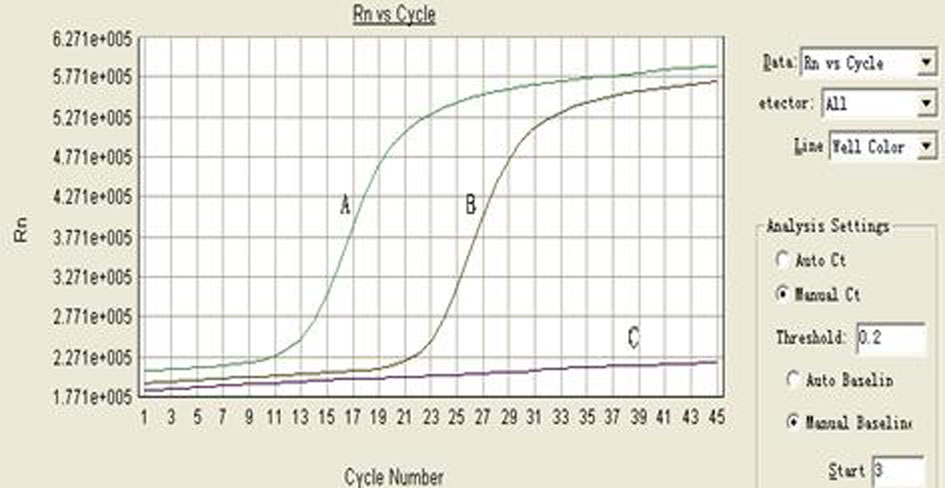Nested fluorescence reverse transcription-polymerase chain reaction (RT-PCR) detection method for avian influenza virus (AIV) H5 subtype and detection kit
A technology of RT-PCR and avian influenza virus, which is applied in the field of nested fluorescent RT-PCR detection and detection kits for H5 subtype of avian influenza virus, can solve the problems of inability to use rapid detection, long diagnostic cycle and high sensitivity, and achieve Effects of increasing efficiency and fidelity, reducing non-specific amplification, and improving sensitivity and specificity
- Summary
- Abstract
- Description
- Claims
- Application Information
AI Technical Summary
Problems solved by technology
Method used
Image
Examples
Embodiment Construction
[0045] The specific construction steps of the present invention are further elaborated below, mainly including the following steps:
[0046] 1. Design and synthesis of AIV H5 subtype nested fluorescent RT-PCR primers and probes:
[0047] Use Lasergene gene analysis software to compare the nucleotide sequences of H3 subtype AIV, NDV, and EDSV downloaded from NCBI, find highly conserved regions, select appropriate AIV HA gene-related sequences, and import them into the probe design software Primer Express 2.0 Design nested fluorescent RT-PCR primers and Tagman probes for AIV H5 subtype, dissolve them in DEPC-treated water, and store them in the dark at -80°C. The schematic diagram of its outer primers P1, P2, inner primers P3, P4 and probes is as follows figure 1 As shown, their sequences are shown in the table below:
[0048]
[0049] 2. Establishment and optimization of nested fluorescent RT-PCR reaction system:
[0050] (1) Optimization of the concentration of internal ...
PUM
 Login to View More
Login to View More Abstract
Description
Claims
Application Information
 Login to View More
Login to View More - R&D
- Intellectual Property
- Life Sciences
- Materials
- Tech Scout
- Unparalleled Data Quality
- Higher Quality Content
- 60% Fewer Hallucinations
Browse by: Latest US Patents, China's latest patents, Technical Efficacy Thesaurus, Application Domain, Technology Topic, Popular Technical Reports.
© 2025 PatSnap. All rights reserved.Legal|Privacy policy|Modern Slavery Act Transparency Statement|Sitemap|About US| Contact US: help@patsnap.com



